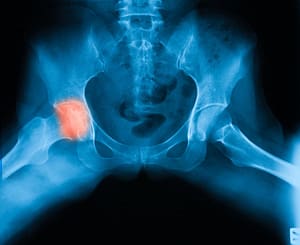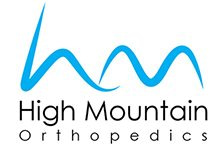Treatment Of Osteonecrosis
 At High Mountain Orthopedics, our team of experienced professionals provides treatment for a wide range of conditions that affect the spine, neck, knee, shoulder, foot, ankle, elbow, hand, wrist and hip. Also called avascular necrosis (AVN) or aseptic necrosis, osteonecrosis is a rare but serious condition that occurs when bone cells die due to decreased blood flow. Our orthopedic surgeons are well-versed in treatment of osteonecrosis and can help you find relief at our Wayne, NJ, surgical center or one of our associated hospitals, Valley Hospital or St. Joseph’s Hospital.
At High Mountain Orthopedics, our team of experienced professionals provides treatment for a wide range of conditions that affect the spine, neck, knee, shoulder, foot, ankle, elbow, hand, wrist and hip. Also called avascular necrosis (AVN) or aseptic necrosis, osteonecrosis is a rare but serious condition that occurs when bone cells die due to decreased blood flow. Our orthopedic surgeons are well-versed in treatment of osteonecrosis and can help you find relief at our Wayne, NJ, surgical center or one of our associated hospitals, Valley Hospital or St. Joseph’s Hospital.Common causes of osteonecrosis include:
- Serious trauma or injury that interrupts blood supply to the bone
- High doses and prolonged use of corticosteroid medications
- Excessive consumption of alcohol
- Lupus
There are less common risk factors that are linked to osteonecrosis, including blood disorders like sickle cell anemia, decompression disease (often occurs during scuba diving), HIV/AIDS, diabetes, systemic lupus erythematosus, pancreatitis, radiation treatment, organ transplant and the use of bisphosphonates.
Many people don’t experience any symptoms in the early stages of osteonecrosis. As the condition progresses, you may only have pain in an affected joint when you bear weight on it. Pain typically develops gradually, and can range from mild to severe. You may eventually feel discomfort even when lying down. Some people develop osteonecrosis on both sides, for example, in both knees or hips. If you have persistent pain in any joint, it’s vital to see one of our orthopedic surgeons right away. Injuries such as broken bones and dislocated joints should also be treated immediately.
Diagnostic tests such as X-rays, MRI, CT scans and bone scans help our skilled surgeons detect osteonecrosis at every stage. MRI is particularly helpful in detecting very early osteonecrosis. Our doctors’ close working relationships with our associated hospitals ensure that we receive your results in a timely manner so we can get started on treating your condition and easing your pain.
In its early stages, osteonecrosis may be treated with medications, physical therapy and electrical stimulation. We offer a range of surgical and nonsurgical procedures to treat osteonecrosis. Because symptoms aren’t always noticeable until osteonecrosis is at an advanced stage, your doctor may recommend surgery such as:
Core Decompression: This procedure involves removing part of the inner layer of bone, which can reduce pain and stimulate the production of healthy bone tissue and new blood vessels.
Bone Graft: Your surgeon grafts healthy bone from another part of your body to strengthen the area affected by osteonecrosis.
Osteotomy: This surgery is a bone-shaping procedure in which a section of bone is removed above or below a weight-bearing joint. This helps shift your weight off the affected area.
Joint Replacement: If other treatments haven’t been effective or if bone has collapsed, the damaged parts of your joint may need to be replaced with biocompatible plastic or metal parts. An integral member of our practice, Dr. Sherwin Su specializes in total joint replacement and reconstruction.
After a thorough evaluation of your condition, your doctor will determine which type of treatment is best for you. Our surgeons and staff are committed to keeping up with the latest technology and techniques in orthopedic medicine.
Our experienced team and associated hospitals are committed to providing compassionate quality care to all our patients. At High Mountain Orthopedics, we’re happy to answer any questions you may have about osteonecrosis and are here to help with any orthopedic issue you may be facing. Contact us online or call 973-595-7779 24 hours a day, seven days a week. To schedule an appointment with our physical therapy department, call 973-321-1790. We serve residents of Northern New Jersey with our location in Wayne, NJ.
Schedule An Appointment Today!
If you or someone you know is in pain, we can help. Take the first step and schedule an appointment.
